The scent is an alluring thing. It makes us want to get close to people who smell good or wander into places where we can smell a scent we like. It also has the power to energize and heal people.
香りは魅力的なものです。良い香りがする人のそばに近づきたくなったり、好きな香りがする所にフラフラと入ってしまったり……。また、人を元気にさせたり、癒やす力もあります。
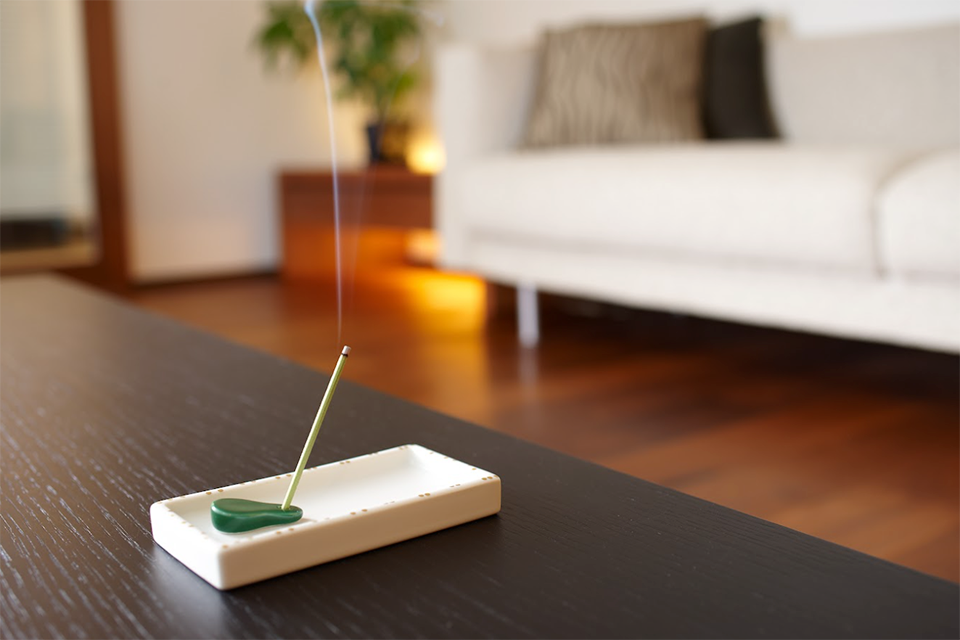
Aromas and fragrances are familiar to us today, but in Japan, “incense” has been handed down from generation to generation as a unique fragrance culture. Incense was believed to have the power to dispel evil spirits, so it was used as a talisman, smoked as a hospitality offering, or even infused and worn on a garment.
香りというと、今はアロマやフレグランスが身近ですが、日本では「お香」が独自の香りの文化として昔から受け継がれてきました。お香は邪気を払う力があると考えられていたため、お守りにしたり、もてなしのためにくゆらせたり、衣服に香りをたき込めていた時代もありました。
Incense was first introduced to Japan around the year 538 when Buddhism was introduced. At that time, it was mainly used to purify Buddha altars and had strong religious connotations. The oldest mention of incense in Japan is found in the “Nihon Shoki (Chronicles of Japan),” which states that in the year 595, fragrant wood drifted to Awaji Island and was presented to the Imperial Court.
日本に最初にお香が入ってきたのは、仏教が伝来した538年頃のこと。当時は、主に仏前を清めるものとして用いられ、宗教的な意味合いが強いものでした。日本でもっとも古いお香の記述があるのは「日本書紀」で、595年に香木が淡路島に流れ着き、朝廷に献上されたと書かれています。
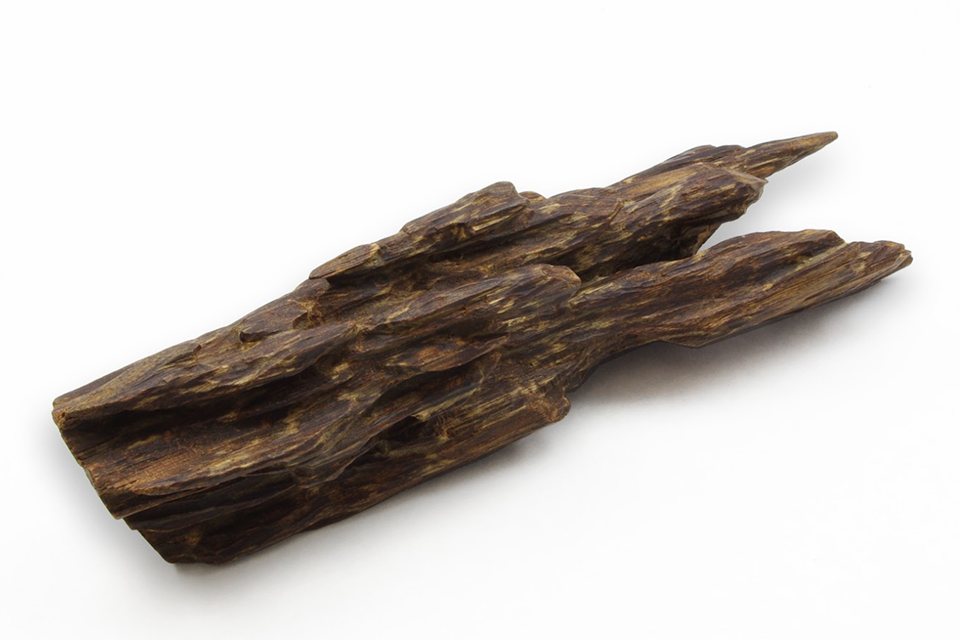
Most incense ingredients are derived from plants, some of which are used as spices or herbal medicines. These are mainly produced in China, India, and Southeast Asia, and since most of these plants do not grow in Japan, they have been treated as precious commodities since incense was first introduced to Japan. In recent years, many of them have been designated as endangered species due to overharvesting and deterioration of the natural environment, making them difficult to obtain.
お香の原料は多くが植物由来で、香辛料や漢方薬として使われているものもあります。これらは主に中国やインド、東南アジアなどで産出され、ほとんどが日本では育たない植物であるため、日本にお香が伝わった当初から貴重な品として扱われてきました。近年、乱獲や自然環境の悪化で絶滅危惧種として指定され、入手が困難になったものも少なくありません。
Jinko, a representative aromatic wood, is made from a tree of the Zingiberaceae family whose resin partially condenses and matures in the process of withering. Ranjatai, a Shosoin Imperial Treasure, is a type of agarwood and is widely known by that name. I have seen it at an exhibition, and there are traces of cuttings made by Nobunaga Oda, Yoshimasa Ashikaga, and Emperor Meiji, indicating that it was not only valuable but also a symbol of power. Byakudan (sandalwood) is a member of the sandalwood family, and its fragrance is found in the center of its trunk. It is also used as a material for fans, and there was nothing like the look on my mother's enraptured face when she used a sandalwood fan!
代表的な香木の「沈香(じんこう)」は、ジンチョウゲ科の樹木に部分的に樹脂が凝縮し、枯れていく過程で熟成されてできます。正倉院御物である「蘭奢待(らんじゃたい)」は沈香の一種で、その名は広く知られています。私は展覧会で見たことがありますが、織田信長、足利義政、明治天皇が切り取った跡が残されていて、貴重であると同時に権力の象徴だったことが伺えます。「白檀(びゃくだん)」はビャクダン科の樹木で、幹の中心部分に香りを有する香木です。扇子の素材としても使われ、白檀の扇子を使うときの母のうっとりとした顔といったらありませんでした!
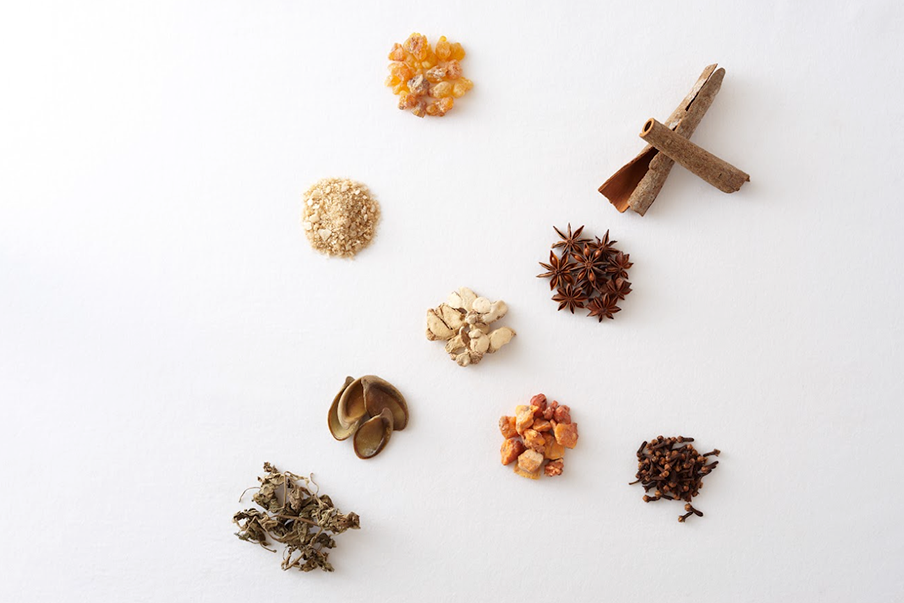
The art of preparing incense was introduced in the Nara period (around the 8th century). In the Heian period (8-12th centuries), the custom of mixing incense by oneself, competing with each other on the quality of the fragrance, and enjoying it by smelling it over a charcoal fire and smothering it in one’s room or kimono became popular among the upper class society. Many scenes of such appear in the literature of the imperial court. The recipe of a person who was called a master at that time is said to still exist today.
このお香ですが、調合技術が伝来したのは奈良時代(8世紀頃)のこと。平安時代(8~12世紀)になると、自分で香りを調合し、その香りの良さを競い合う遊びや、炭火でくゆらせ、部屋や着物にたきこめて楽しむ風習が上流社会で流行しました。王朝文学にもそうした場面が数々登場します。当時、名人と呼ばれた方の調合法が、今も残っているそうです。
In the Kamakura and Muromachi periods, the culture of “Monko” (listening to incense) was born, in which people could appreciate the delicate fragrance of the fragrant wood by facing the wood itself. In the Edo period (1603-1867), various manners and customs for appreciating incense, as well as incense implements, were prepared, and “Kodo” (the way of incense) was established. In Kodo, it is described as “listening to the fragrance,” where the mind is focused on the fragrance, the senses sharpened and quieted, and the fragrance is perceived. Kodo mainly involves holding Kumiko, a gathering in which participants listen to and distinguish fragrances. This is a very elegant art in which several kinds of fragrances are used to express waka poems and classical literature, and the participants play with the fragrances while imagining the scenes of the world of the story. As with tea ceremony and flower arrangement, it is a useful art form that serves as a gateway to self-improvement and culture.
鎌倉・室町時代になると、香木そのものと向き合い、その香りを繊細に観賞する「聞香(もんこう)」が誕生しました。江戸時代に入ると、香を観賞するためのさまざまな所作や作法、香道具が整えられ、「香道」が確立します。香道では「香りを聞く」と表現し、感覚を研ぎ澄ませて心を静めて香りに集中し、その香りを感じ取ります。香道は主に、香りを聞き分ける「組香(くみこう)」を行う会を催します。数種類の香りを用いて和歌や古典文学などを表現し、その物語世界の情景を想像しながら聞き当てて遊ぶという、とても風流なものです。文学の造詣が深いと楽しみが増すため、茶道や華道同様、自分を磨く教養の入り口としても役立つ芸事です。
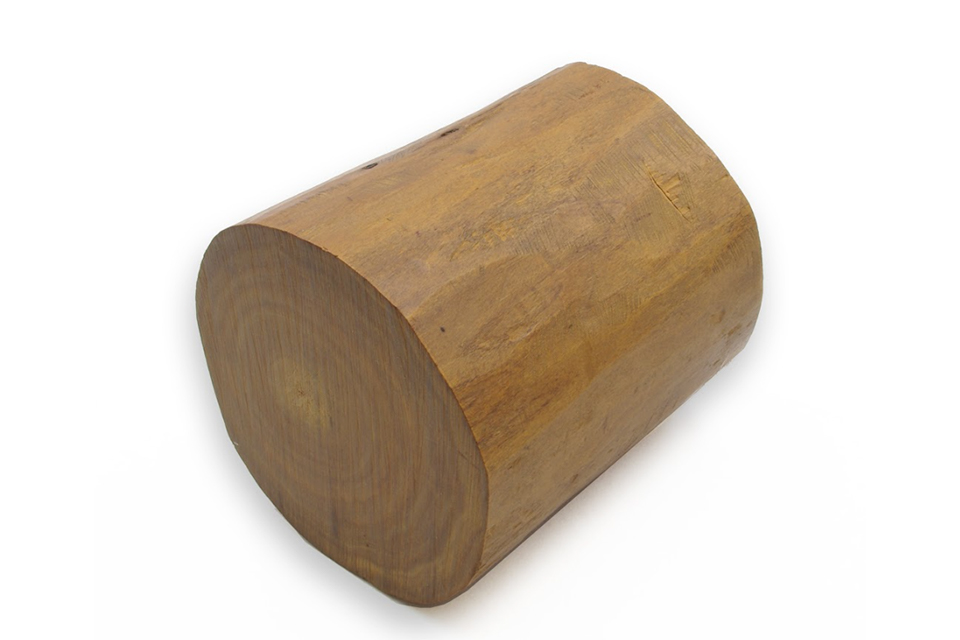
There are three types of incense: incense that is scented at room temperature, incense that is lit directly, and incense that is heated indirectly. “Nioiko” is the room-temperature type and comes in a small, cute drawstring-shaped pouch (scent bag) that can be carried around. Insect-repellent incense contains ingredients that have a repellent effect against insects. Incense sticks are lit directly. The ingredients are powdered, kneaded, and dried into long, thin sticks. This is used in Buddhist ceremonies and also as a room fragrance. During the incense ceremony, the charcoal that started the fire is buried in the ashes of the furnace, agarwood is placed on the charcoal, and the aroma is slowly savored by applying heat indirectly.
お香は、常温で香るタイプ、直接火をつけるタイプ、間接的に熱を加えるタイプの3種類があります。常温で香るタイプの「匂い香」は、巾着型などの小さなかわいい袋(匂い袋)に入っていて携帯できます。防虫香と呼ばれるものには、虫に対する忌避効果のある原料が配合されています。お線香には直接火をつけます。原料を粉末にして練り上げ、細長い棒状にして乾燥させます。これは仏事で使うほか、ルームフレグランスとしても使えます。香道のお席の時には、炉の灰の中に火起こしした炭を埋め、沈香を置いて、間接的に熱を加えてゆっくり香りを味わいます。
In Kyoto, a city with many shrines and temples, there are still many stores specializing in the incense that have existed since ancient times. Shoeido, which has been in business for 300 years, is taking on the challenge of preserving its history and traditions and passing on the art of incense culture to the modern age while continuing the techniques of its masters, which have never been seen outside of the store. Shoeido is actively engaged in a variety of activities, such as offering tours with explanations of the incense production process, opening a base for disseminating information on incense culture where visitors can casually experience the fragrance of incense, and developing a mobile incense sales van.
神社仏閣が立ち並ぶ京都には、昔からのお香専門店が今も数多くあります。創業300年の歴史を持つ「香老舗 松栄堂」は、歴史と伝統を守り、門外不出の匠の技を継ぎながら、現代に香文化を継承しようとさまざまな挑戦をしています。お線香の製造工程を解説付きで見学させてくれたり、気軽にお香の香りを体験できる香り文化の情報発信拠点を開設したり、お香の移動販売車を展開したりと積極的です。
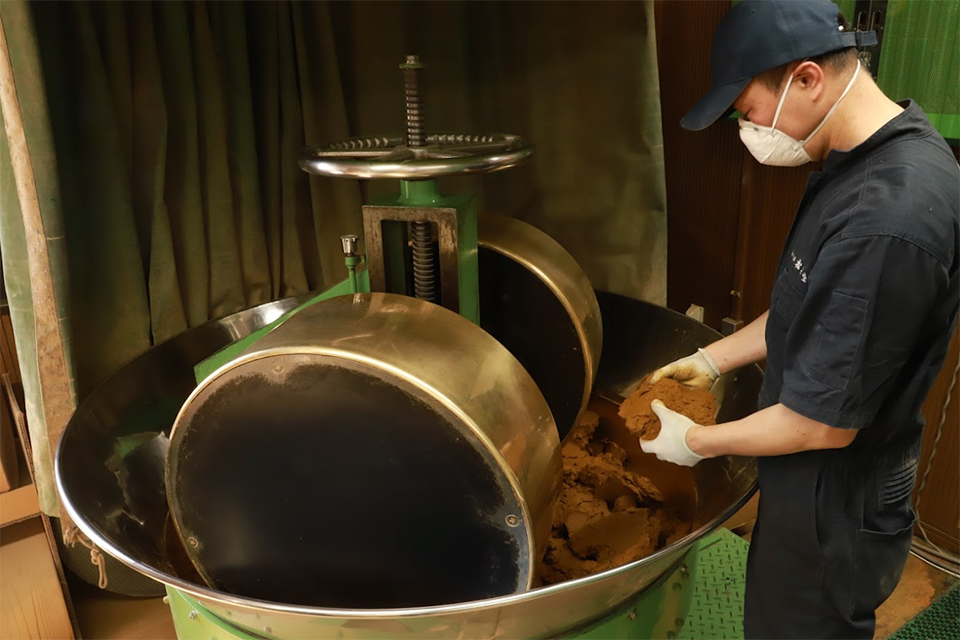
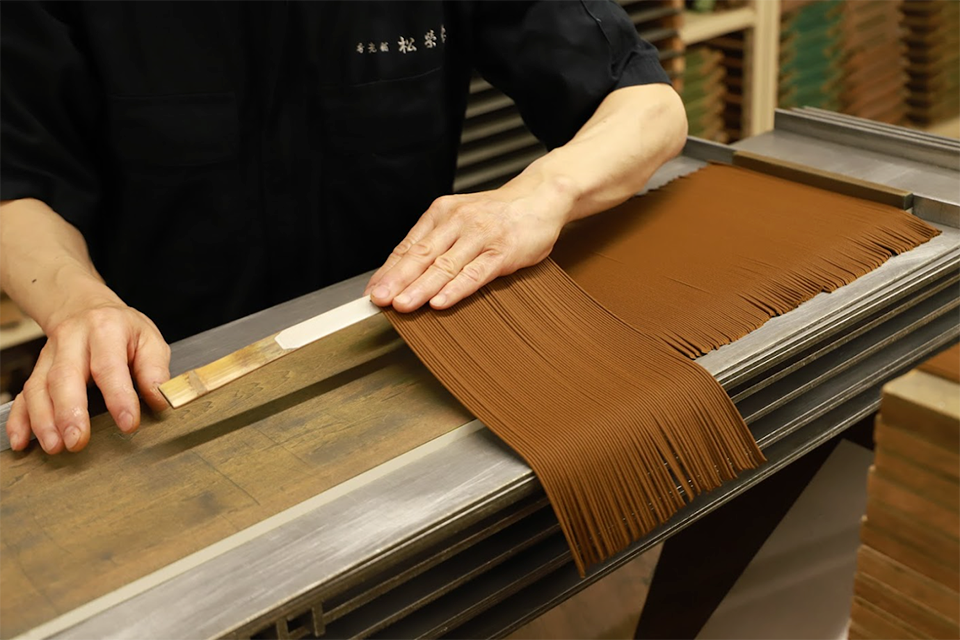
Preserve, transmit, and develop. We who live in the present are responsible for enjoying and spreading the incense culture that Japan has nurtured.
守り、伝え、発展させる。日本が育んできた香文化を楽しみ広める役割は、今に生きる私たちが担っています。
Text: IWASAKI Yumi | Hiragana Times / We Culture Session Lead Writer
画像提供 香老舗 松栄堂


